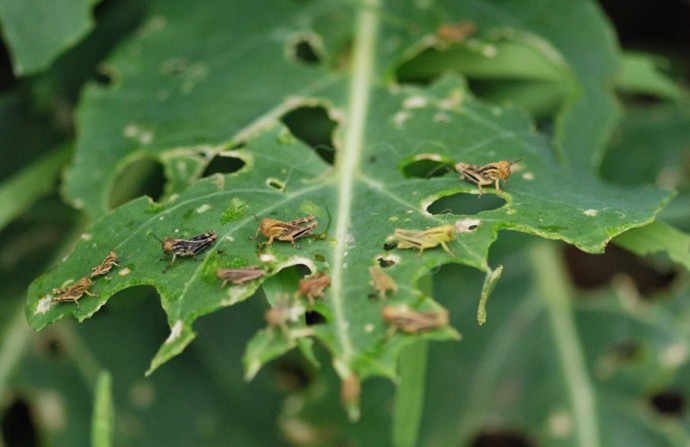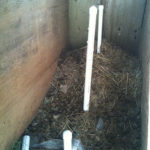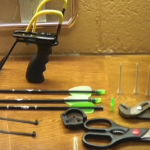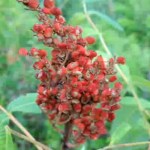There are hundreds of species of grasshoppers in North America alone. They are also some of the most voracious eaters and can devastate a garden if given the opportunity. They can jump long distances and glide their way onto crops before devouring leaves and moving on to their next target. Grasshoppers are also some the most difficult insects to control. However, with a little bit of savvy and developing a multi-layered approach, you can keep infestations to a minimum and give your plants more protection.
Screens

The easiest way to prevent grasshoppers from eating leaves in your garden is to directly protect the plants. Placing screens or wire mesh around crops will create a barrier that will make it impossible for them to penetrate temporarily. The problem is that their strong jaws are more than capable of gnawing through metal, and it will only be a matter of time before they cut holes in the screens and get at your plants. However, if you are attentive and apply patches as necessary, this can be a very simple and practical option to consider.
Start a War

Another option is to plant certain types of flowers around your garden that will attract insects that are natural predators for grasshoppers. All you need to do is build the right habitat and nature will take its course over time. Unfortunately, time is the operative word here, and it may take a while before this natural defense system is up and running. Some of the best plants to consider include sunflowers, calendula, marigolds, dill and daisies.
Chickens

One balanced option is to allow your chickens to peck around in your garden during the evening hours before dark. They will gladly eat grasshoppers when they are at their most active. While this may not be a complete solution, it does provide a double benefit. Chickens get to eat and your grasshopper problem may diminish. Just make sure that you protect plants that are prone to damage from chickens if you let them loose in the garden. Some people also suggest using turkeys as they are less prone to scratching and digging as they move around.
Tall Grass and Weeding
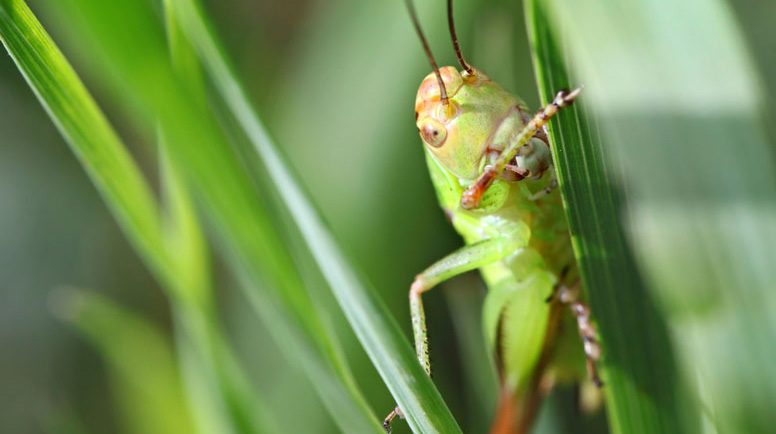
Keeping your garden weeded will decrease attractive places for grasshoppers to perch before devouring your plants. Leaving some tall grass around the perimeter of your garden will also help to lure grasshoppers away from plants as well. They prefer to hang out in tall grass and eat the blades due to the fact this provides natural cover while they forage. Keeping weeds out of the area of your garden will cause them to gravitate towards the tall grass in greater numbers.
Other options include using special baits or pesticides that are specifically-designed to target grasshoppers. However, you run the risk of harming insects that help the garden and keep things in balance as well. Another option is to spray your plants with soapy water as a repellent. However, it’s important that you use all-natural or organic soaps in order to avoid contaminating your crops.
Try a combination of these tricks and see if they will help you to keep persistent grasshopper problems under control. Remember, all you need to do is keep them away from your leaves, so a little bit of active management on your part may be just what the doctor ordered in order to protect your crops.


